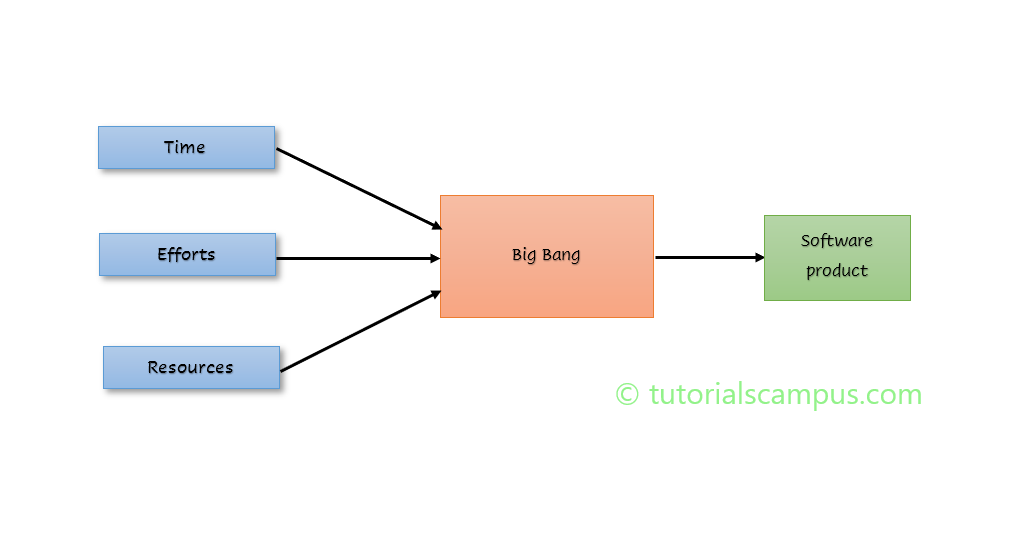SDLC Big Bang Model
Why Big Bang Model?
In some cases, there might be an urgency in developing new requirements that might have huge business impact or client is not clear on requirements or client have no idea on the new project outcome and impact on the current system. For these type of cases, following all SDLC phases increases the cost and turn around time. So there is requirement of new model to complete the projects in short span of time. Big bang model is designed with this concept of faster turn around time by following only few or some phases of SDLC.
When to use Big Bang Model?
Big Bang Model is recommended when -
- Client has no proper requirements in hand.
- New requirement needs faster deployement.
- Requirements may change based on the current developing product outcome.
What is Big Bang Model?
Big Bang Model design lies around the notation that starts from nothing. Big Bang Model has no process or procedure but a little planning is required. In Big Bang Model, the development starts with necessary money, efforts and workfoce as input and produces the software product as output. Big Bang model doesn't follow any SDLC protocols hence less planning required.
The Big Band Model does not have any planning, requirements, best practices to strat with or typical procedures to follow. The primary objective of big bang model is start coding right now, at this moment without following proper structure and deliver the product to customers.
Day-to-day development get started with team member based on the initial idea or the requirements without knowing the consequences of the outcome. The client has daily or frequent interation with development team to see the outcome of the development. If the developed product is as expected, client approves the product. Otherwise, searches for the different approach to get the expected product.
Big Bang Model is simple to implement however there might be some inbalance in developing the product without having a proper analysis. Each module is tested independently eventhough they are integrated.
Big Bang model suits for the small projects where two to three developers work together to develop the product. It is not suitable for the larger projects.
Big Bang Model is useful when developing a dummy project or academic or learning projects.

Design
Big bang model is very easy comparing with other models. The modules are integrated and tested to look whether there is any presence of defect. Big Bang Model design explained briefly as follows -
- All modules are integrated only when everything or atleast a part of each module is developed.
- Modules will run separately to verify if failure occurs at different level.
- If any defect is found at the integration level, the corresponding modules is backedout to find the root cause for the defect.
Advantages
- Simple and easy to implement.
- Required less or no planning.
- Required less resources.
- Appropriate for small projects only.
- Cost-effective model.
- Easy to manage.
- Flexible for developers as there is no time limit for project.
- Require only few resources.
- Provide a good learning curve for new comers and students.
- Managing modules is not tough.
- Easy to achieve.
- No management of requirements.
- Suits for small projects.
- Makes managing tasks easier.
Disadvantages -
- Not suitable for large projects.
- Poor for long and ongoing projects.
- Risk is very high.
- Inexpensive Model.
- Chances of uncertainty are high.
- Gives less Return of Investment.
- Highly insecured model.
- If requirements are not properly understood, this model would turn out to be so costly.
